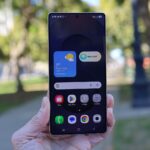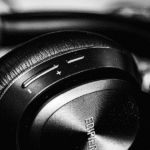USB-C is about as ubiquitous as a piece of tech can get. The world’s most common pill-shaped data transfer and power delivery port can be found everywhere, from the side of the MacBook Air to the interiors of cars, from power banks to the PS5.
It’s also the port of choice for every currently-made smartphone. Android phone makers took to USB-C, with its reversible connection and impressive data transfer speeds, in the late 2010s – Apple, however, lagged behind until 2023, when incoming European Union regulations forced the world’s biggest company to adopt USB-C for new iPhone models.
With how universal and powerful the USB-C port is, there’s been little reason to suspect that it could disappear any time soon… until now.
The Samsung Galaxy Z Fold 7 is the thinnest booklet-style folding phone on the market, at just 4.2mm when unfolded – having held one myself, I can tell you that it’s a truly beautiful phone that impresses with its design and spec sheet in equal measure. As our in-depth Galaxy Z Fold 7 review finds, “it’s the best large-screen foldable ever made”.
However, that thinness doesn’t leave much room for ports, and tilting the phone to look at the bottom edge reveals a USB-C port that seems barely contained by the surrounding chassis. The same is true for other thin folding phones like the Oppo Find N5 – during my testing of that phone, I was told that Oppo had modified its USB-C housing to get it to fit on the phone’s 4.2mm edge.
If folding phones keep getting thinner, the USB-C port may become a limiting factor, and eventually a prime target for removal. If folding phones prove functional, this could be seen as an invitation for phone makers to save space and money by removing the USB-C port from slab phones, too.
My first exposure to the idea of a portless smartphone was through a 2020 YouTube video from MKBHD, wherein host Marques Brownlee considered that MagSafe could signal an upcoming end to ports on the iPhone lineup.
However, smartphone ports have thus far survived the widespread adoption of wireless charging capability, and I honestly think they’ll survive the ongoing thinning of folding phones, too. It’s not time to ditch USB-C ports just yet: let me explain.
Firstly, the reason MagSafe didn’t immediately kill off the charging port was because wireless charging in 2020 was nowhere near fast enough to replace wired charging. And while significant steps have been taken in this domain, there’s still a huge gulf between the fastest wireless chargers and the fastest wired chargers.
This is most acutely felt in the Android world, where phones from brands like Oppo and Xiaomi offer support for close to 100W of power delivery when using a wired charger, but typically around 25W of power delivery when using a wireless charger. The latest-generation MagSafe chargers offer around 25W of power delivery too, and while this isn’t far off the iPhone’s estimated 30-35W wired charging, this says more about how low the iPhone’s charging power is than how powerful MagSafe is.
Additionally, it’s probably fair to say that wireless charging is not as efficient as wired charging. In a 2024 test by iFixit, charging the iPhone 15 Pro with iFixit’s GaN 65W charger resulted in 64.1% efficiency, measuring total energy draw against battery capacity. In comparison, the MagSafe 15W charger was just 41% efficient.
Losing the USB-C port would also be a real knock for mobile photographers and filmmakers, and anyone who works with large files on their smartphone. Though data transfer can be done wirelessly, it’s not as fast as wired transfer over USB, and depends on the strength of your wireless or mobile data signal.
Furthermore, the recent WeTransfer scandal has given many pause for thought when it comes to using free file transfer services, and cloud storage services like Google Drive and OneDrive only have a limited amount of free storage. Using a USB cable is quicker, more secure, and maybe even cheaper..
USB-C may be the last of its kind, but it’s an expected feature on today’s smartphones, and even if the everyday person doesn’t use it that often, it’s still a boost for those who rely on speedy charging or rapid file transfers
With that said, the headphone jack was a boost for music lovers or those working with audio, but still ended up disappearing from the bottom edge of the world’s flagship phones after Apple axed it in 2016 – the 3.5mm port now lives in exile on specialist phones made for media professionals (we salute you, Sony Xperia 1 VI).
The rumored iPhone Fold is still far over the horizon, so I doubt the ‘Apple Effect’ will be a major factor for quite some time when it comes to USB-C disappearing.
So, there you have it: I can’t see the USB-C port being erased any time soon, even if folding phones continue trending towards slimmer and slimmer designs.
What do you think? Are the USB-C port’s days numbered? Let us know in the comments below.
Read the full article here












